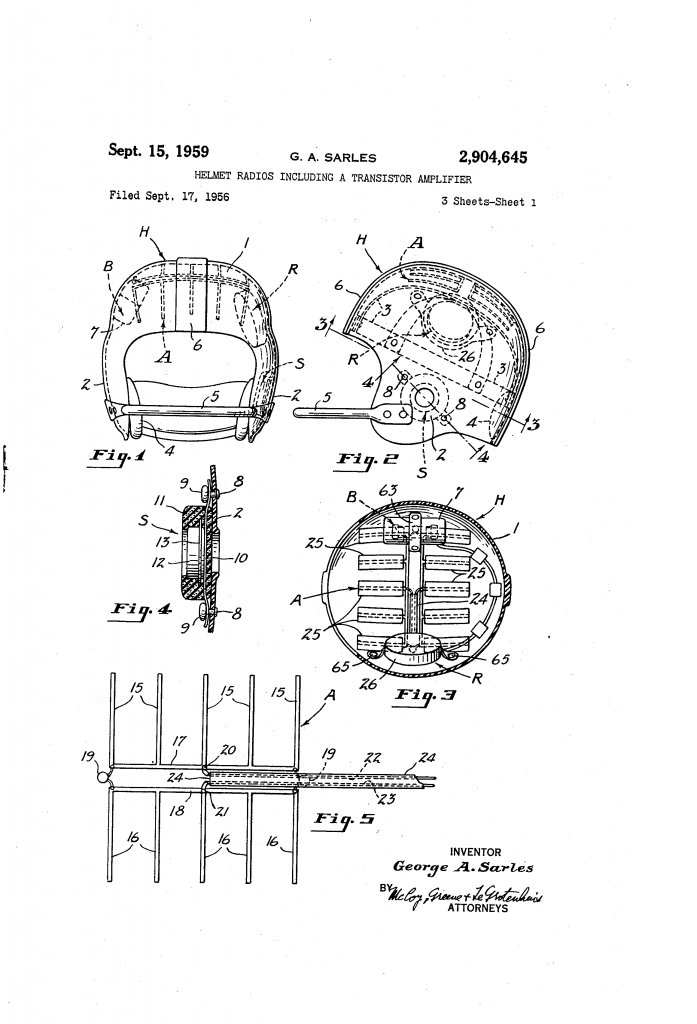Like any human endeavor, sports evolve over time. Science and technology fuel these changes, improving athletic equipment design, training, and the value of information gleaned from player statistics. From everyday recreational activities to the highest levels of competitive play, these innovations were real game-changers for sports. These breakthroughs, in my eyes, have had the biggest impact.
Baseball – Tommy John Surgery (1974)

Dr. Frank Jobe and Tommy John in trainer’s room at Dodger Stadium. [Photo courtesy of Los Angeles Dodgers]
Football – Helmet Audio (1994)

Original patent drawing for HELMET RADIOS INCLUDING A TRANSISTOR AMPLIFIER (US 2904645-A)
Though the Cleveland Browns experimented with the idea of placing homemade radio receivers inside the helmet of quarterback George Ratterman in 1956, it wasn’t until 1994 that the NFL first allowed quarterbacks to use built-in radios inside their helmets to communicate with football coaches on the sidelines.
Tennis – Composite Tennis Rackets (1968)
Until the 1970s, tennis rackets were only fashioned out of wood. Although the functionality of wooden rackets improved with advancements in laminating technology (using thin layers of wood glued together) and in stringing methods, the rackets were still relatively heavy and the surface area of racket heads remained small. Compared to modern rackets used today, even the best-made wood rackets were unwieldy and lacking in power. Then, in 1968, Wilson introduced its T2000, the first steel racket on the market. The popularity of the T2000 racket skyrocketed after Jimmy Connors adopted it as his own.
Basketball – Breakaway Rims (1976)
That the NBA needed a new kind of basketball hoop became more and more obvious as slam-dunking became increasingly popular during the 1970s. If dunks didn’t damage the hoop completely, they shattered the backboard, putting the safety of players and spectators at risk. Not to mention that NBA games were often delayed for hours while the equipment was replaced. With a hunch that technology to build a better hoop must exist, Randy Albrecht, an assistant college basketball coach, approached his uncle Arthur Ehrat, a grain elevator worker, to explore the idea. Ehrat added a hinge and a spring from a John Deere cultivator to a basketball hoop rim. With the new setup, the iron basketball rim could bend–and immediately snap back into place–under pressure.
